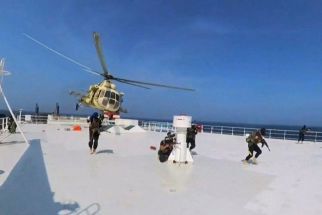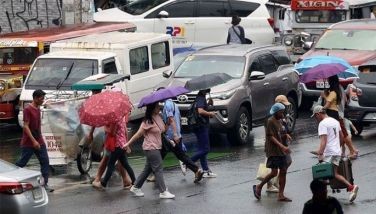DILG to PNP: Cut construction cost of police stations by 10%
MANILA, Philippines - While the alleged overpriced police helicopters, patrol boats and the questionable repair of armored personnel vehicles remain unresolved in court, Interior and Local Government Secretary Jesse Robredo has ordered the Philippine National Police (PNP) to reduce the construction cost of police stations by 10 percent.
The DILG chief issued the memorandum after receiving reports that PNP has been allocating P5.135 million for the construction of a modest police station, described as type B or C in some countryside municipalities, when the structure can be built with a P3.5 million budget.
Robredo cited the case of the municipal police station (MPS) in San Jose and Tinambac, both in Camarines Sur, and the San Andres MPS in Catanduanes as reference in implementing the new order.
“From the released amount of P15,363,000 to the bid amount of P10, 618,249.68, the savings of P4,744,750.32 can cover the construction of one additional police station in the Bicol region,” Robredo said. “The total amount for the three police stations were lower than the approved agency estimate by 31 percent.”
PNP chief Nicanor Bartolome, however, claimed that the low cost construction of the San Andres MPS is an “isolated case” based on the report submitted by the Regional Engineering Officer of PRO 5.
According to Bartolome, the project cost estimates prepared by the PNP Engineering Service “will still be used as basis in the programming of funds.”
“Any excess funds that may be incurred from the bidding shall be utilized for other construction work for the same station but not limited to the construction of perimeter fence, landscaping and others,” Bartolome said.
Robredo, however, argued that the lower bids in the construction of the three PNP stations in the Bicol region resulted in the same quality of buildings built by the PNP for P5.135 million.
“You cited this as an isolated case, which is not so, since the bid for the three municipal PNP stations is almost within the range of an average project cost of P3.5 million,” Robredo said in his letter to Bartolome.
Robredo added that reduction in the agency estimates (AE) must be made because having a large AE may encourage collusion among bidders “to cover up or establish bid prices on a non-competitive level to prevent free and open competition.”
“The practice of using excess funds out of the bidded amount for the construction of additional works or facilities must not be tolerated. If the desire is to include the fence, it should be covered in the scope of work for MPS and not just an afterthought,” he added.
The project cost estimates of P5.153 million per type B and C police station are being prepared by the PNP Engineering Service, the funds of which are being sourced from the 25 percent PNP share from its Trust Receipts, and downloaded to the PNP Regional Offices for implementation.
At the same time, Robredo also asked Bartolome to review the agency budget estimates for PNP patrol boots and patrol shirts after the Department of Budget and Management (DBM) disapproved overpriced amounts based on their evaluation and actual canvassing.
The DBM, in its own computation, reduced PNP’s original request of P241.2 to P180 million for the acquisition of patrol boots and patrol shirts, which resulted in government savings of P61.2 million.
The PNP’s original request for 90,000 pair of boots was placed at P1,980 per pair but the DBM reduced the price to P1,450, saving P530 per pair.
For the acquisition of 90,000 patrol shirts, the PNP’s price was pegged at P700 each; but the DBM reduced it to only P550 per pair, thus creating a P150 savings for each shirt.
The DBM also disallowed a total of P253, 929,490 from PNP’s 2011 P2 billion capability enhancement program budget by adjusting the unit costs of some vehicles and equipment items.
“Similarly, the Department of Public Works and Highways had automatically reduced their agency estimates on its road projects by 10 percent. But they were still able to deliver the same quality outputs and was actually able to build more roads thru this method of optimum utilization of funds,” Robredo noted.
- Latest
- Trending





























